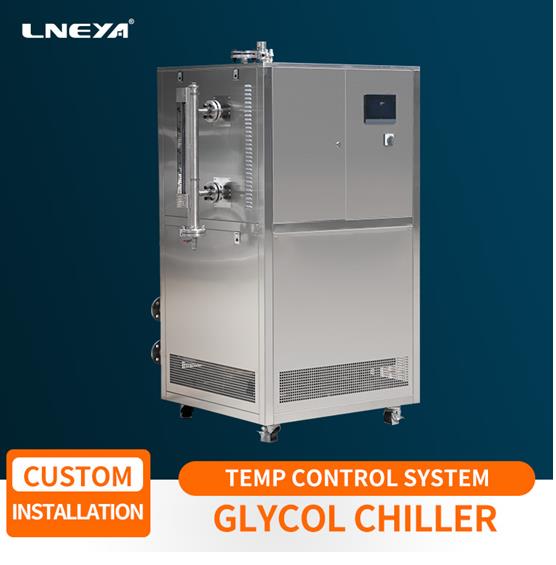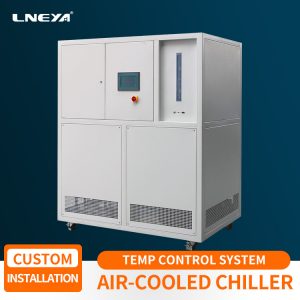Description de la température du refroidisseur de glycol
For users and friends, it is necessary to
have a deep understanding of glycol chillers before use. It is recommended to
know the temperature in various equipment such as refrigeration system,
evaporating temperature, condensing temperature, etc.

If the refrigeration system of the glycol
chiller can operate safely, three points need to be paid attention to:
1. The pressure of the refrigerant in the
refrigeration system needs to be observed at any time to avoid abnormal high
pressure, so as to avoid rupture;
2. The phenomenon of damp heat stroke and
liquid shock shall not occur and occur, so as to avoid damage;
3. Pay attention to timely maintenance of
each component, so as to avoid component defects and cause malfunction of the
glycol chiller.
The evaporation temperature of a glycol
chiller refers to the temperature at which the refrigerant in the evaporator
inside the unit boils and vaporizes under a fixed pressure. The condensing
temperature is the gas refrigerant in the condenser of the unit, and the
temperature at which it condenses into a liquid under a certain pressure is
called the condensing temperature. The recooling (or subcooling) temperature
refers to the temperature at which the condensed liquid refrigerant is cooled
to below the condensing temperature under the condensing pressure, which is
called the recooling temperature (or subcooling temperature). The intermediate
temperature of the glycol chiller refers to the two-stage compression system.
The saturation temperature of the refrigerant in the intercooler at the
intermediate pressure is called the intermediate temperature.
In fact, the temperature description of the
glycol chiller is quite a lot. So how to detect the suction temperature and
discharge temperature of the glycol chiller compressor after knowing these
temperatures? The suction temperature of the compressor can be measured from
the thermometer in front of the suction valve of the compressor. The suction
temperature is generally higher than the evaporating temperature, and the difference
depends on the length of the return pipe and the insulation of the pipe.
Generally, it should be 5-10 higher than the evaporating temperature. The
superheat can be adjusted by changing the liquid supply; The air temperature
can be measured from a thermometer on the exhaust pipe. The exhaust temperature
of a glycol chiller is directly proportional to the (suction and exhaust)
pressure ratio and the suction temperature. The higher the suction superheat
and the higher the pressure ratio, the higher the exhaust temperature,
otherwise the opposite. Generally, the exhaust pressure is slightly higher than
the condensing pressure.
Therefore, in order to better run the
glycol chiller, users still need to understand it. If you don’t
understand, you can contact us at sales@cnzlh.com. LNEYA is a chiller
manufacturer.
Recommandations connexes
-
Function of Evaporator in Air Cooled Chiller
1071The air-cooled chiller adopts the air cooling mode, which eliminates the essential cooling tower, cooling water pump and pipeline system of the cooling water system, avoids the condenser scaling and water pipe blockage in areas with poor water qua...
Voir les détails -
-
Ultra-high temperature material cold and hot impact box refrigeration oil
1205The ultra-high temperature material impact test chamber test device has too much frozen oil in the evaporator, which can also cause insufficient cooling and cause slow cooling. The oil stored in the evaporator of the ultra-high temperature materia...
Voir les détails -
Reactor thermostat heating circulation equipment
779Reactor thermostat heating circulation equipment is a kind of equipment used to accurately control the temperature in the reactor during the chemical reaction process to ensure that the chemical reaction can be carried out under the set te...
Voir les détails
 LNEYA Industrial Chillers Fabricant Fournisseur
LNEYA Industrial Chillers Fabricant Fournisseur












